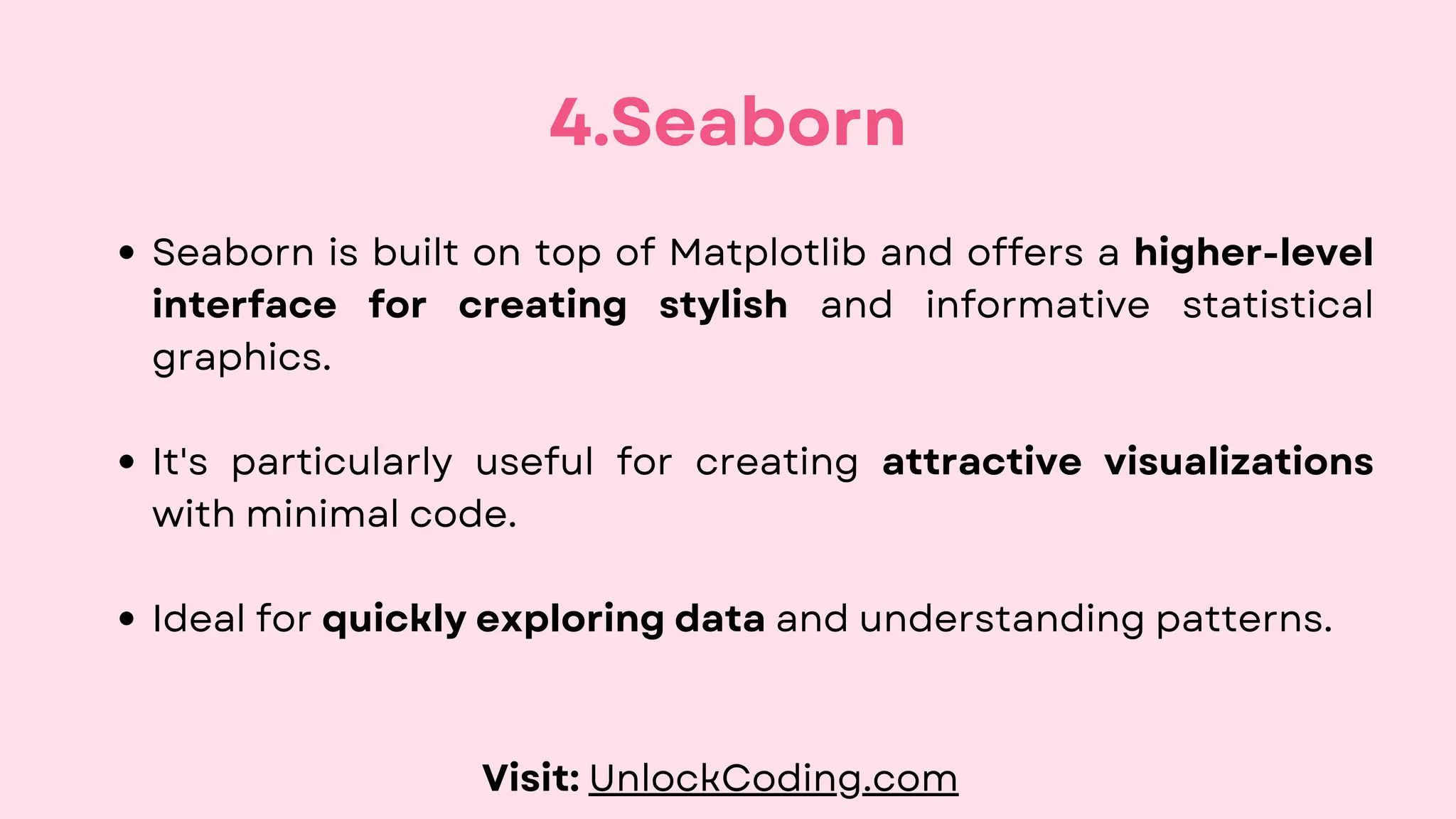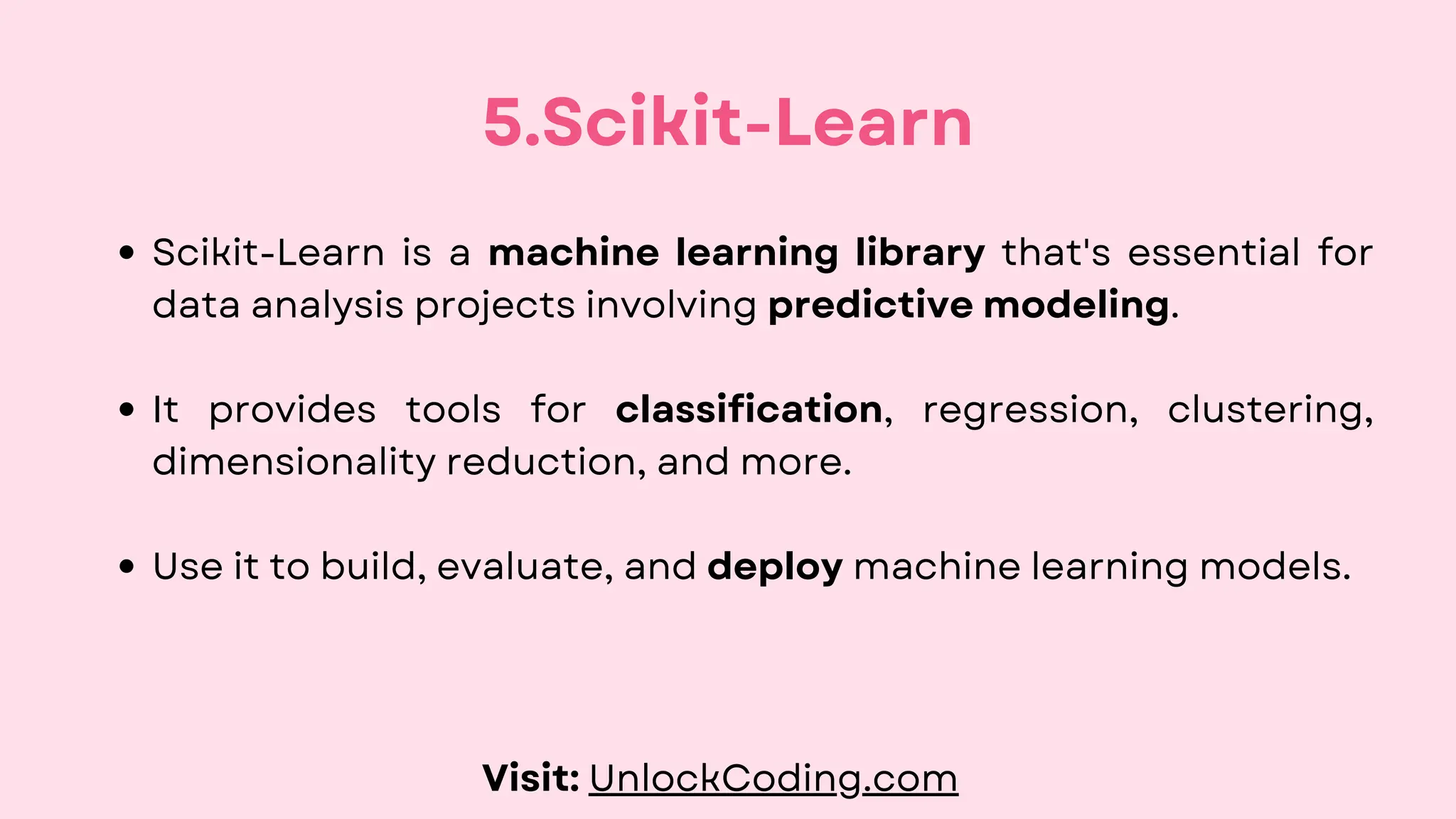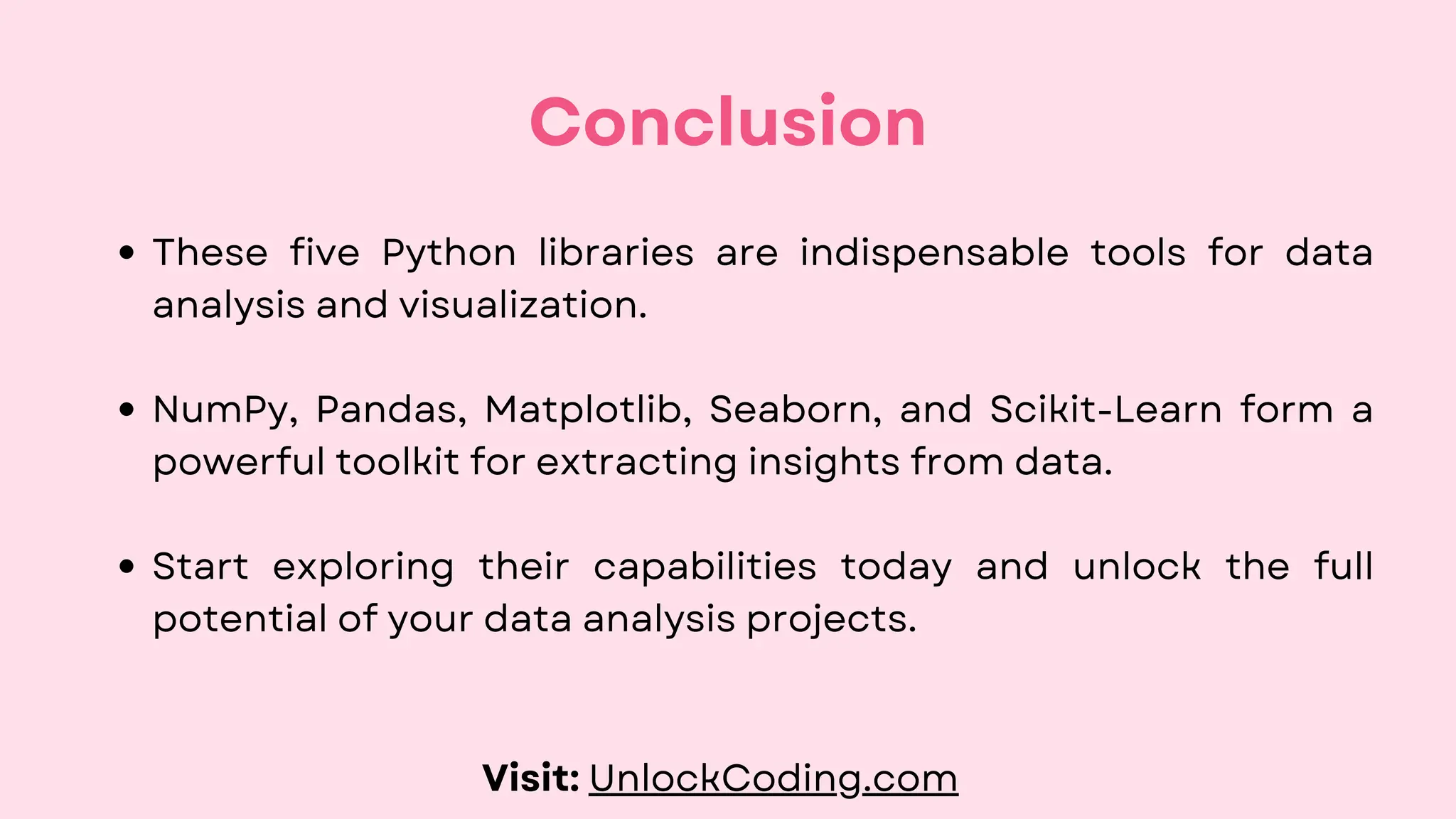The document introduces five essential Python libraries for data analysis: NumPy, Pandas, Matplotlib, Seaborn, and Scikit-learn. Each library plays a crucial role in data manipulation, visualization, and machine learning, helping to enhance the data analysis workflow. The document encourages users to leverage these tools to unlock the full potential of their data projects.







